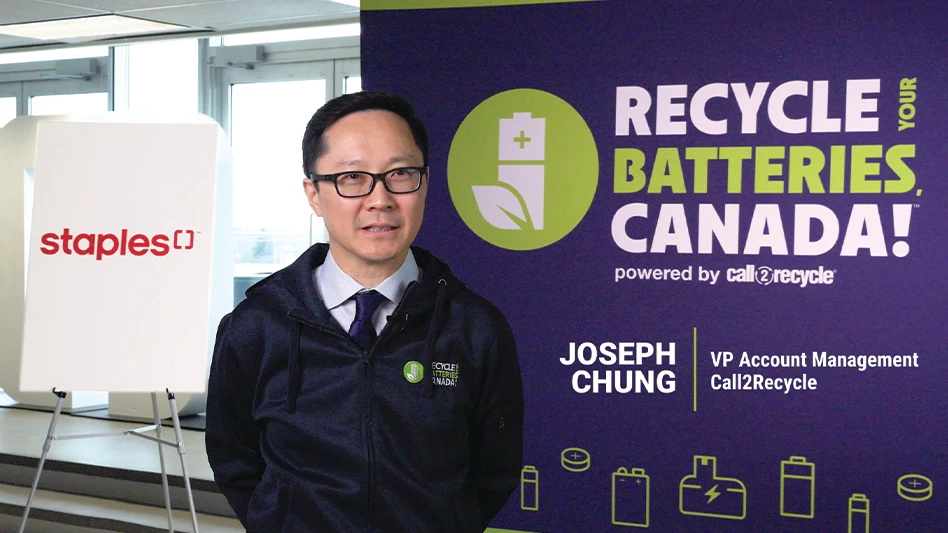Curbside programs are being carefully examined by recycling advocates and government policy makers in the Midwestern U.S., as they are in other parts the country, for their continued viability.
Meanwhile, the movement of more traditional scrap materials in the region—including ferrous scrap and paper—is steady, if not spectacular. The flatness of recycling volumes and programs matches a prairie landscape that might be associated with the Midwest region.
AWAITING A SURGE. "Things are flowing into the yard, but it is slow on both paper and steel scrap," says Marty Davis of Midland-Davis Corp., Moline Ill. "Inbound numbers are down from our peak years. Outbound, we can sell everything that comes in."
Sam Jacobs, president and owner of Columbus Metal Industries, Columbus, Neb., agrees. "Things are pretty quiet. We’re going sideways," he says. "We’re seeing moderate to slow volumes, but flow is pretty steady."
Doug Padnos, secondary fiber manager for Louis Padnos Iron & Metal, Holland, Mich., terms the corrugated market "sloppy" and the news market "tight." Like Davis, he says generation of materials is weak. "Corrugated prices are lackluster, balanced with lackluster demand," Padnos says.
In Nebraska, however, Dale Gubbels, CEO of Firstar Fiber Corp., Omaha, sees no dropoff in recycled paper. Most of his work is commercial. "The economy had an impact," he admits, but it seems printers are doing well. "We don’t see any lack of interest or dropoff in tonnages," Gubbels says.
One of Marty Davis’s concerns is getting rail cars to ship commodities. "Availability of gondolas for steel scrap still is not great, but it has gotten better in the past 18 months," he says.
While Midland-Davis has no problem selling paper, it does have scheduling problems getting the paper to move: "About half of the trucks show up on time," Davis says. "If we could get more flow into the yard, we could sell more paper," he adds.
Curbside programs perk along in Indiana. "Outside of a couple of communities, we don’t see a lot of slippage," says Lance Hodge, executive director of the Association of Indiana Solid Waste Management Districts. Part of Indiana’s success is based on a utility bill fee that provides funding for curbside programs. Hodge says he sees a dropoff only in instances where an independent contractor is backing away from recycling. "It’s not too widespread," he states.
POLITICAL OUTLOOK. While recyclers deal with day-to-day problems, politicians generally work with a longer-term view. Despite economic problems, the Midwest is hanging tough.
"Things are not too bad," says Michelle Cohen, executive director of the Indiana Recycling Coalition, Bloomington. "I haven’t heard of any programs getting hit too hard."
Gubbels wishes the same could be said for Nebraska. "Nebraska has not made a strong push legislatively to get behind recycling," he says. Firstar does business in Iowa, and Gubbels likes what he sees in the Hawkeye State.
| PLEASANT DREAMS |
|
Anyone who deals with landfills knows that mattresses and box springs are among the most bulky, hard-to-handle items that come over the scales. County solid waste officers often see discarded mattresses sitting along the roadside or in sinkholes. Hospitals, colleges and hotels don’t know what to do with huge numbers of worn-out mattresses they regularly generate. In Indiana, they’re not taking this situation lying down. There is no feather-bedding, either. In fact, the Indiana Recycling Coalition, Bloomington, is working with a company called Mattress Recycling to recycle mattresses, one of the traditional problem materials at landfills. Like most other states in the Midwest region, Indiana is struggling to meet recycling goals. Mattress Recycling, a division of Bee Environmental Management of Indianapolis, started dismantling and recycling mattresses this summer. "We are recycling 100 percent of the mattress," says Ann Smith, general manager of Mattress Recycling, which claims to be the region’s first commercial mattress recycling operation. They also handle box springs. The company recycles steel coils, polyurethane foam, the wood structure and the cotton component of the bedding. Mattresses are accepted from private individuals (at a cost of $25 each or $40 per set) and from commercial or municipal handlers. The fee to recycle a truckload of mattresses is $1,500. "You can get 110 mattresses on a 53-foot truck," Smith says. That makes the per-item cost about $15 to a municipality, hotel or mattress company. "Most waste districts have no problem paying that amount," she continues. "Mattress manufacturer, Restonic, New Albany, Ind., was the first to take advantage of our recycling program." Mattress Recycling accepts mattresses from any private or public entity, whether they are located in Indiana or based in another state. The firm says each landfilled mattress takes up a half-cubic yard, so 100 occupy 50 cubic yards. That’s about 18,250 cubic yards in landfill space saved by diverting and recycling 100 mattresses a day. Based on a $75 per ton tipping fee, mattresses produce revenue of $9.38 per cubic yard, compared to paying $56 per cubic yard to bury uncompressed mattresses. With limited landfill space available for the future, mattresses consume 600 percent more compactible space than normal compactible trash. Smith says that the fee about covers the cost of labor to tear a mattress apart. While they do make money on the recyclables, the wood fraction, for instance, returns only pennies per unit. |
Dewayne Johnson, executive director of the Iowa Recycling Association, Des Moines, says part of the reason for Iowa’s success is that almost all of the state’s landfills are publicly managed and buy-in on projects is good. For private recyclers, a carrot is along with the sticks found in many laws.
Iowa’s legislature passed a measure, which went into effect July 1, 2003, that gives wood waste processors a tax exemption. "If you process wood and create a new product, the property used is tax exempt," Johnson says.
The City of Dubuque rolled out a program which Johnson praises as "both comprehensive and aggressive." The recycling effort was supported by advertising and billboards. Citizens responded by requesting a record number of blue boxes.
Because of state law, Johnson notes, many Iowa cities have moved to volume-based recycling programs over the past 18 months. "If a community does not meet the state’s diversion goals, they have to go to a volume-based program," he explains. Any town that does not meet its goals has to pay more money into the program, so there is a strong financial, as well as an ethical, incentive to recycle.
"Iowa has a fairly decent system set up. They support their recycling efforts from landfill tipping fees," Gubbels says.
Contrast that to what happened in Nebraska this past session. As in most states, the governor had trouble balancing the budget. Much of the $9 million Nebraska Environmental Trust Fund comes from Nebraska Lottery proceeds. The governor saw that $9 million as going a long way toward balancing the budget. Fortunately, the legislators held off the attack, giving up only about 10 percent of the funds. Nebraska legislation also affected tire recyclers.
Bill Miner of Central States Tire, Wisner, Neb., had a profitable tire baling operation. The tire bales were used for stream bank stabilization and similar uses. Along came the state legislature, mandating shredding. The only problem is that the predominant use for shredded tires in Nebraska is daily cover in landfills.
ELECTRONICS. The Indiana Recycling Coalition (IRC) spearheaded a group focusing on recycling of electronics in the Hoosier State. The program is built around a series of meetings to be held over a year. The first was held in May and the second in July. "We are trying to get together the key players—whether they have a facility in Indiana or in nearby states—and get them involved," Cohen says.
Nearly 12 million personal computers, and other electronics, will become obsolete in Indiana between 1997 and 2007, IRC figures, making electronic scrap a significant and growing component of the solid waste stream. Based on today’s disposal habits, only 11 percent of that equipment will be recycled. The rest will be landfilled or stockpiled in basements or storage areas.
The first of 10 expected meetings attracted 30 to 40 people from industry and government. The goal is to develop methods for recycling electronics that can be shared in seminars or presented to those not active in the formative meetings, enabling participants to reach internal waste minimization goals and decrease procurement and management costs. "Options resulting from the program will make up a sustainable large-scale infrastructure for dealing with e-scrap that program partners can take advantage of, at lower costs," Cohen remarks.
Although supported by a $40,000 grant from The Indiana Department of Environmental Management, IRC needs partners to financially support the program. The "E-Scrap Action Program" will prominently recognize participants.
In Iowa, the Department of Natural Resources rolled out a series of eight collection opportunities for schools to recycle computers and components.
In addition to recycling computers, Indiana is reusing PCs. "Indiana has a rapidly proliferating surplus of electronic technology, most of which is in excellent working order," says John Crooks, director of the Indianapolis-based non-profit organization Virtual Scavengers Project. "The IRC project can help us match supply with need," he adds. Crooks’ organization uses volunteers to refurbish and redistribute computers to under-served populations in Indiana.
Do not dismiss home-grown projects, the recycling coordinators contend. Nebraska’s paper recycling projects, especially those in rural areas, thrive on the work of community groups and volunteers. That is one of the reasons Gubbels has not seen a serious dropoff in paper generated in small towns.
UNCERTAIN FORECAST. Padnos says the ferrous market is sending mixed signals. The yard he works from is seeing some renewed interest on cut grades. Although Michigan’s ferrous scrap traditionally slows as the auto industry takes its summer vacation and retooling break, he finds the regional market steady, with demand matching generation.
Just as the Michigan-Ohio markets follow the auto business, in Nebraska, Jacobs knows local prices will follow Chicago and the Midwest’s other major cities. Eventually, however, Jacobs sees pricing evening out across the Midwest.
Jacobs says he thinks select markets will improve in price as the year wears on. "The shred markets will pick up and the prime grades will improve," he expects, basing his supposition on an increase in demand for better grades of scrap material in the face of feeble output from manufacturers.
"Our generators and suppliers are confident," Gubbels says. "Either the economy is coming back or things are not as bad as some people think."
Padnos is slightly encouraged by broad economic signs. He notes the stock market managed to climb 1,000 points and that government manufacturing statistics are slightly encouraging.
"It’ll be a slow climb back," he says. While he hopes that things will be better in the fourth quarter, he adds, "I don’t see anyone with a magic wand."
The author is a Recycling Today contributing editor and freelance writer based in Strongsville, Ohio. He can be contacted via e-mail at curt@curtharler.com.
Get curated news on YOUR industry.
Enter your email to receive our newsletters.

Explore the September 2003 Issue
Check out more from this issue and find your next story to read.
Latest from Recycling Today
- Recycled steel price crosses $500 per ton threshold
- Smithers report looks at PCR plastic’s near-term prospects
- Plastics association quantifies US-EU trade dispute impacts
- Nucor expects slimmer profits in early 2025
- CP Group announces new senior vice president
- APR publishes Design Guide in French
- AmSty recorded first sales of PolyRenew Styrene in 2024
- PRE says EU’s plastic recycling industry at a breaking point





